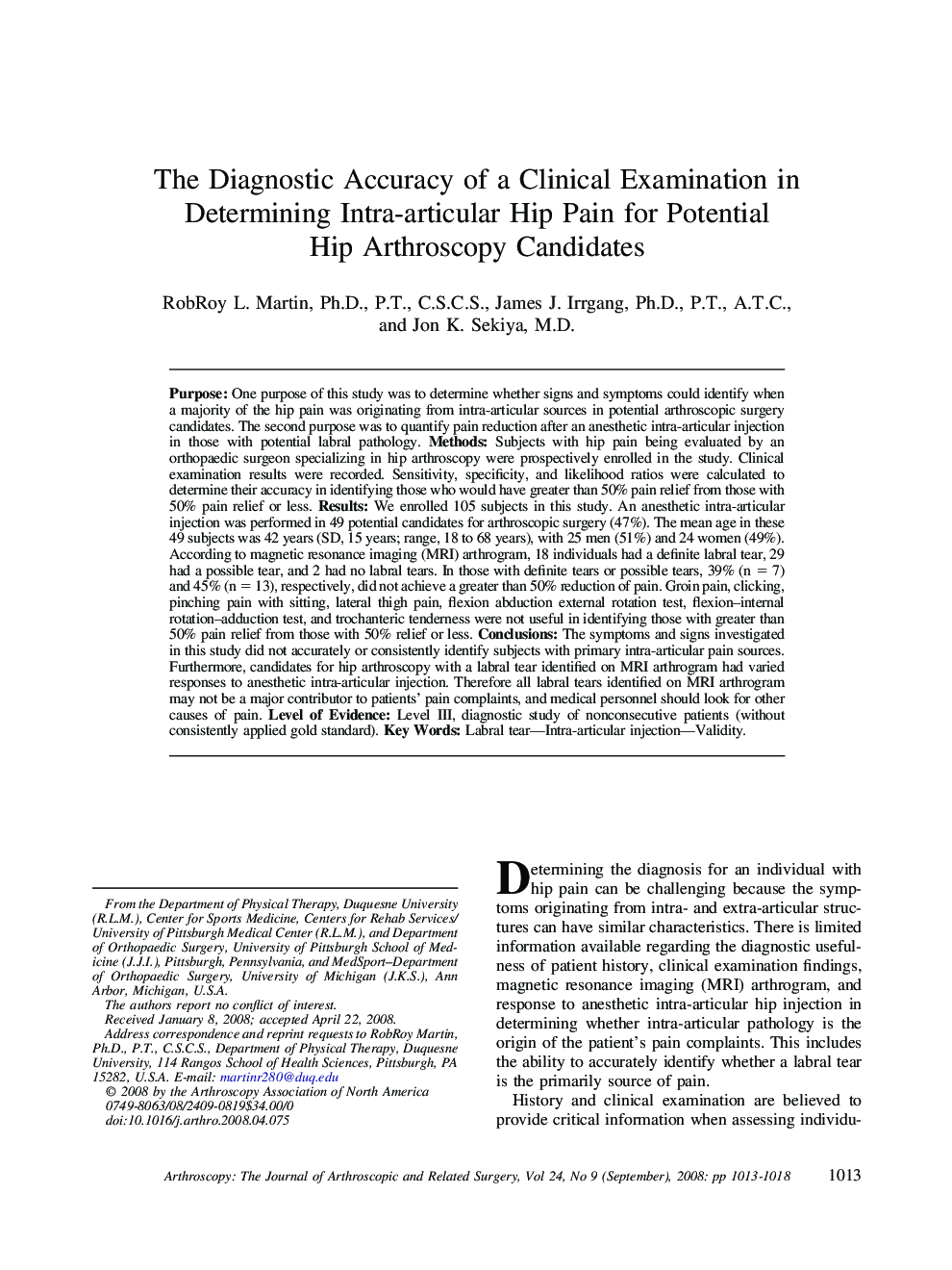| Article ID | Journal | Published Year | Pages | File Type |
|---|---|---|---|---|
| 4045905 | Arthroscopy: The Journal of Arthroscopic & Related Surgery | 2008 | 6 Pages |
Purpose: One purpose of this study was to determine whether signs and symptoms could identify when a majority of the hip pain was originating from intra-articular sources in potential arthroscopic surgery candidates. The second purpose was to quantify pain reduction after an anesthetic intra-articular injection in those with potential labral pathology. Methods: Subjects with hip pain being evaluated by an orthopaedic surgeon specializing in hip arthroscopy were prospectively enrolled in the study. Clinical examination results were recorded. Sensitivity, specificity, and likelihood ratios were calculated to determine their accuracy in identifying those who would have greater than 50% pain relief from those with 50% pain relief or less. Results: We enrolled 105 subjects in this study. An anesthetic intra-articular injection was performed in 49 potential candidates for arthroscopic surgery (47%). The mean age in these 49 subjects was 42 years (SD, 15 years; range, 18 to 68 years), with 25 men (51%) and 24 women (49%). According to magnetic resonance imaging (MRI) arthrogram, 18 individuals had a definite labral tear, 29 had a possible tear, and 2 had no labral tears. In those with definite tears or possible tears, 39% (n = 7) and 45% (n = 13), respectively, did not achieve a greater than 50% reduction of pain. Groin pain, clicking, pinching pain with sitting, lateral thigh pain, flexion abduction external rotation test, flexion–internal rotation–adduction test, and trochanteric tenderness were not useful in identifying those with greater than 50% pain relief from those with 50% relief or less. Conclusions: The symptoms and signs investigated in this study did not accurately or consistently identify subjects with primary intra-articular pain sources. Furthermore, candidates for hip arthroscopy with a labral tear identified on MRI arthrogram had varied responses to anesthetic intra-articular injection. Therefore all labral tears identified on MRI arthrogram may not be a major contributor to patients' pain complaints, and medical personnel should look for other causes of pain. Level of Evidence: Level III, diagnostic study of nonconsecutive patients (without consistently applied gold standard).
